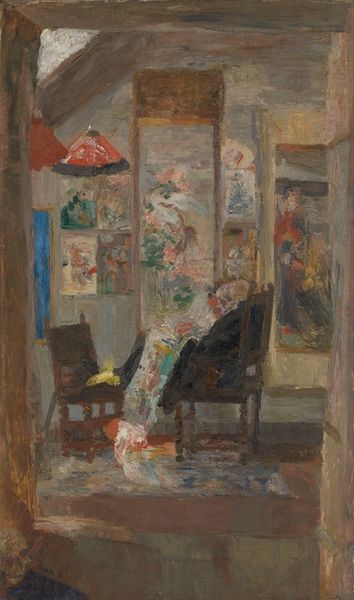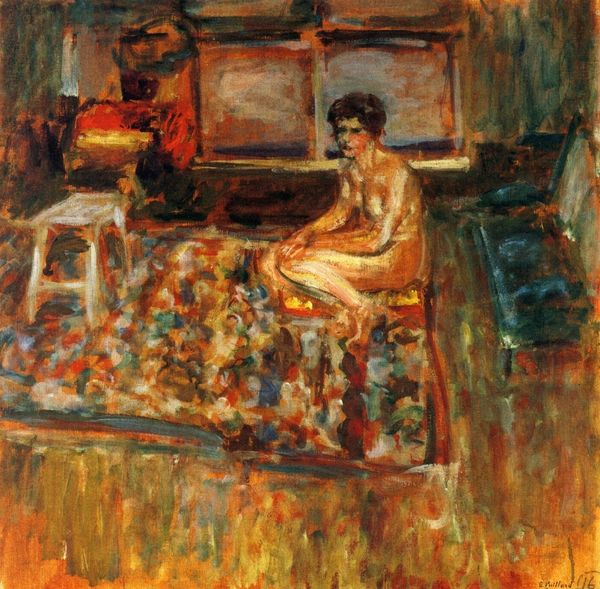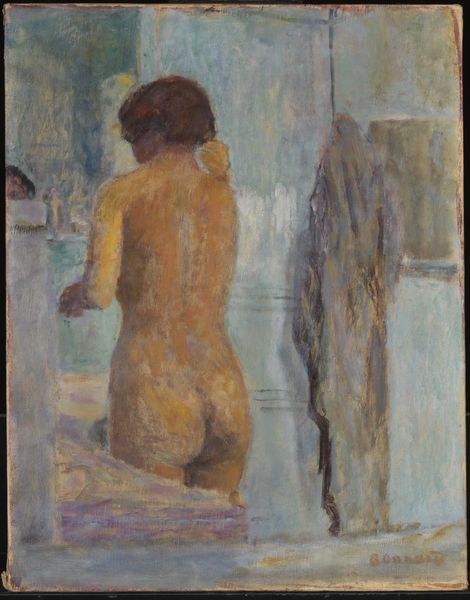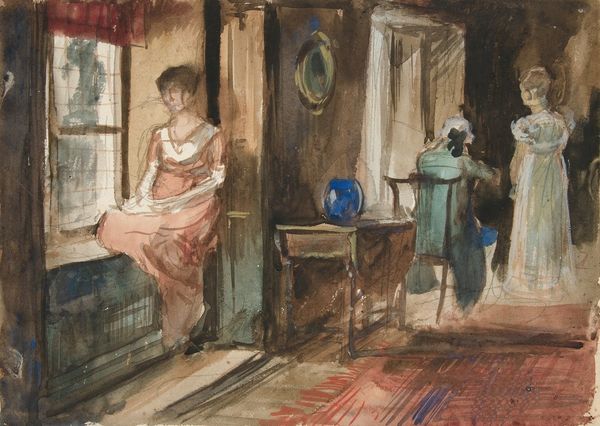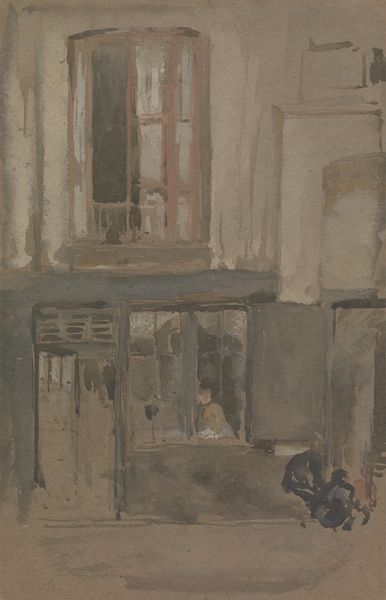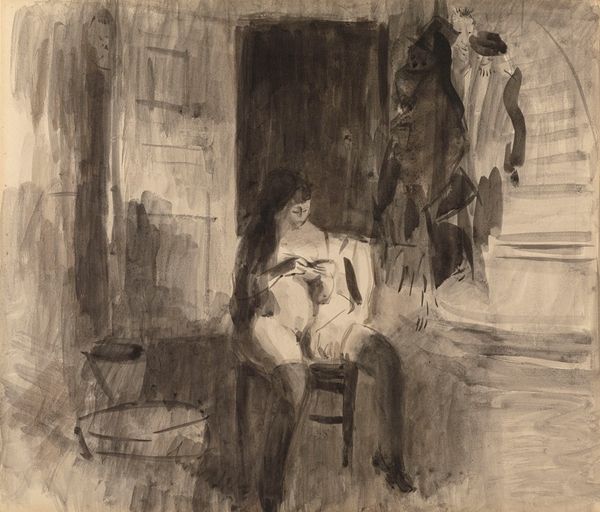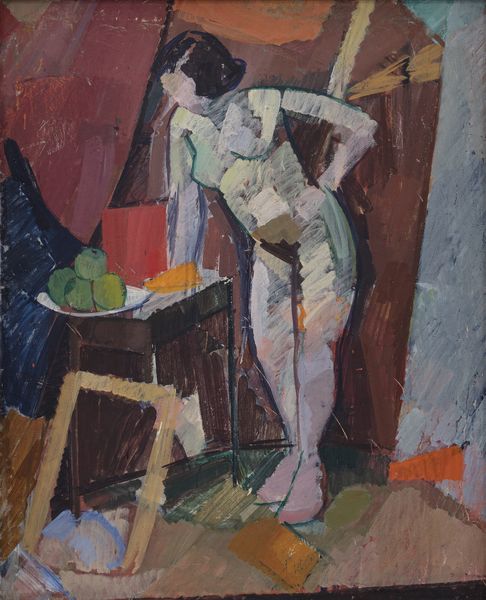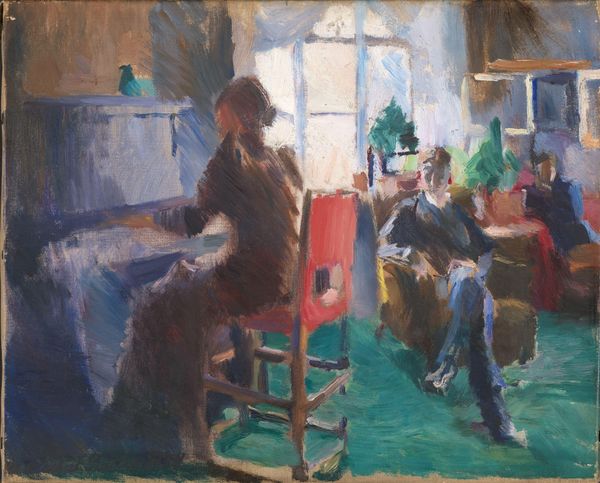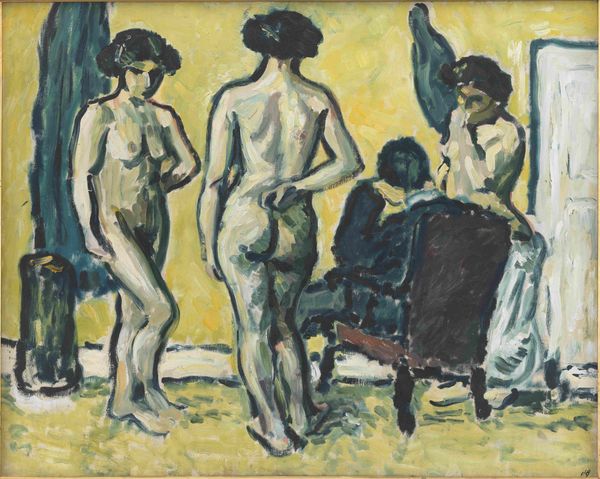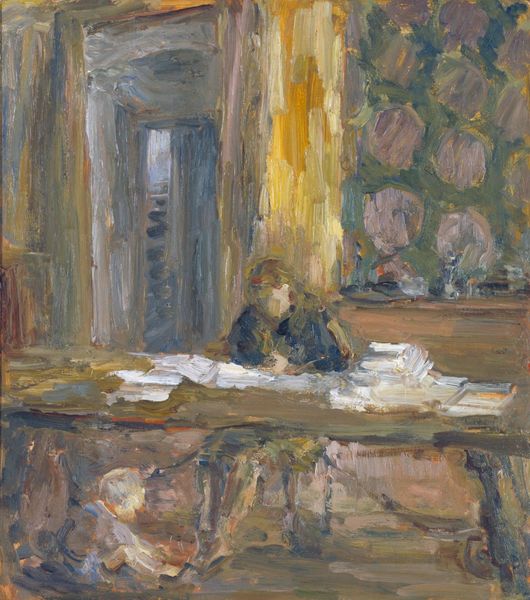
Copyright: Public domain US
Curator: There’s an arresting intimacy to this piece. We’re looking at "The Dressing Room," an oil painting created around 1902 by Émilie Charmy. It depicts a private, interior scene filled with nude or partially nude women. What’s your initial impression? Editor: The overall effect is disorienting. A blur of flesh tones and indistinct forms. It feels claustrophobic, almost voyeuristic. The muted color palette creates this hazy, dreamlike quality, though. Curator: Dreamlike is a great word. Charmy painted with broad, visible brushstrokes, a style called impasto. It makes the scene less about individual details and more about a sense of collective energy and feminine space. There’s a freedom there, away from the male gaze of the time. Editor: Precisely, although it’s a fraught freedom, isn’t it? Charmy presents an exclusively female space, but as a woman artist depicting nude women for a largely male art world, the inherent power dynamics can’t be ignored. Are they empowered, or are they still being passively observed? Curator: I think Charmy aims for something in between. Consider the symbolism inherent in dressing rooms as sites of transformation. They represent an in-between space—before the performance, the presentation of self—and so present a freedom. What happens in a dressing room is usually for ourselves and those we trust to share that private moment with. Editor: I can appreciate that interpretation. Thinking about gender and artistic context, it’s significant that Charmy exhibited her work at the Salon des Indépendants alongside the Fauves. To push beyond academic portraiture and challenge expectations through raw brushwork aligns her with the era's artistic revolt. Curator: It truly sets the tone. Also consider what this room must mean. Perhaps not liberation in a feminist, societal way but on an intimate and individual plane for the people depicted here, who, like Charmy, share both talent and a private world. Editor: That’s the power of a nuanced image like this, isn’t it? To spark dialogue about how art functions within complicated historical and social narratives. Curator: Absolutely, offering glimpses into both personal intimacies and broader cultural dialogues about women, art, and representation. A rewarding exchange.
Comments
No comments
Be the first to comment and join the conversation on the ultimate creative platform.
